Fast is fine
This week: Fast is fine; Camera mites; Solar heat has a cost; Orchard chores; Rewalling; Looking back;
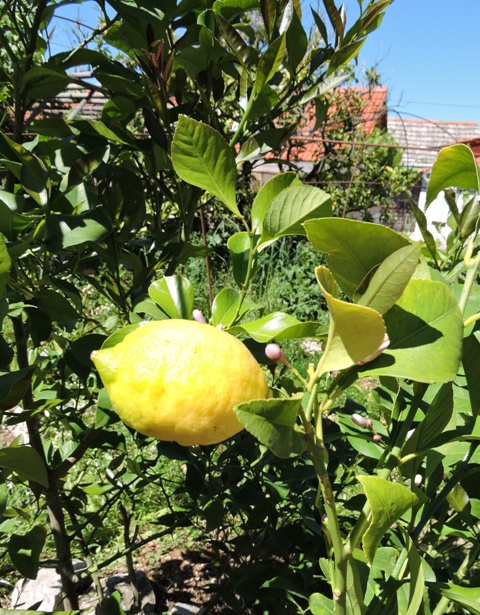
It’s Friday night as I write this and I’ve got Pongo asleep on my knee at the moment. He’s been to the Vets today for neutering.
I took him to the surgery at 8:45 and collected him at 11. The anaesthetic had worn off by mid afternoon, but he is still tired. However he has had some tea and a lot of water to drink
So that’s it. All the felines have all been “done” now. The boys are not chasing the girls, and the girls are chaste.
I took Argen to the Vets on Monday, following the very helpful comments after I mentioned his “sunburnt” ears last week.
Dr Fabian examined him. I must say Argen was as good as gold and just lay there on the examination table while the speculum was poked in his ears.
The Vet poured an antiseptic wash in and cleaned his ears. A black substance came out on the cotton wool. Fabian confirmed this was the result of an ear mite infestation.
Basically Argen has “Mange” or a feline version of Scabies.
So I came home with Oridermyl ear drops to put in once a day, and because mites can be contagious, I have to keep an eye on the other kittens too. I did say to Fabian that keeping them apart might be a tad difficult!

One thing is for certain. Life is never dull with a cat.
Fabian was telling me that he had to euthanise his Labrador last month.
Although a young dog, his pet had developed a tumour in his brain. This growth was affecting his balance and ability to stand and walk.
Despite going to the Veterinary institute in Zagreb for surgery, it was incurable.
It did remind me that all pets, whatever the species and whatever their age, are forever just like children. They trust and rely on their significant human completely and it is up to us to interpret their vocalisations and do the best we can for them.
I feel that Pongo understands that, hence he feels safe in my knee. As his paws and whiskers are trembling again, no doubt he is dreaming of catching another big Egyptian Grasshopper in the orchard.
Fast is fine
I was reminded this week of a quote by the famous western United States sheriff and Marshall, Wyatt Earp, that “Fast is fine, but accuracy is everything.”
Although Marshall Earp was involved in a variety of altercations with outlaws, killing several over the years, he was never actually shot himself.
My mantra is “do it once and do it right”. So although I am impatient to get the Konoba finished, if only so I can move on to my next project, it has taken me some time this week to properly fix insulation for the central heating pipes.
All the pipes and utilities will soon be buried in concrete.
The HEP₂0 plastic piping comes in 25 metre coils. However, once uncoiled, it rather wants to return to its coiled shape. This makes installation both “interesting” and time consuming.
It is rather like trying to fix a Boa Constrictor to the floor. It takes time and a lot of 100 mph tape!

This week has also been about the fiddley bits too.
The upright pieces of pipe which will connect to the central heating radiators are known as “tails”.
These have to be exactly 5 cm apart and between 5 and 10 cm from the wall, so they will mate with the actual radiators.
The easiest way to ensure these measurements were met was for me to make templates to drop over the pipes and to fit to the wall behind.
It was not a long job, using the band saw, to cut the required profile in some plywood offcuts.
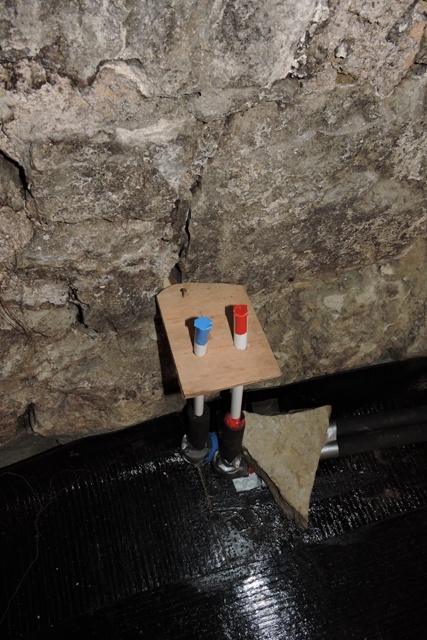
The coloured tapes are there to remind me which is the hot and the cold pipe, and to make sure that all the pipework is connected to the right feed.
As I always do, I have taken photographs so if in the future I ever need to know where pipes are, I can find them.
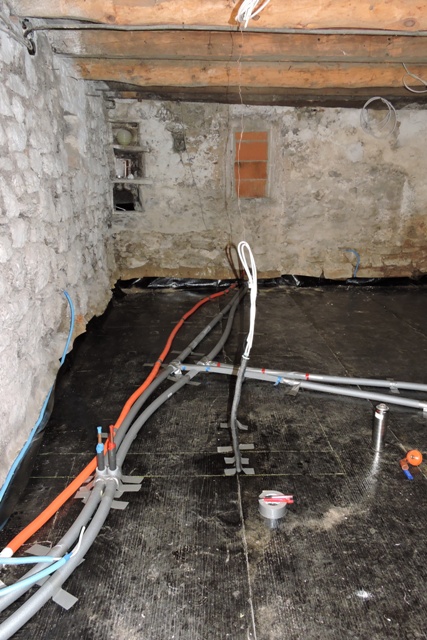
Although I haven’t pressure tested the system – I have faith now in the HEP₂0 installation method – none of the joints are likely to leak, even once buried.
With the HEP system being guaranteed for 50 years of life, I think it will be the next or next but one owners who might find the photographs useful.
Camera mites
It seems that it is not just kittens ears which get infected with mites!
As I was taking some of the photographs in the Konoba, it looked as though there was dust on the lens.
When I am framing photographs I tend to use the camera’s digital screen rather than the digital viewfinder. I find that using the viewfinder and wearing glasses are mutually exclusive.
When I looked at the lens there were some specks of dust so I cleaned the lens with a fibre cloth.
Framing the photograph again, I could see a white speck still, only it was moving slowly down the screen. Rather as you see specks of dust in a shaft of sunlight at home.
So holding the camera in the sunlight I had a look at the lens. There was several minute specks moving about inside the lens, some larger than others.
Somehow, these tiny white mites have managed to get in between the inner and out lenses of my camera.

It is rather disconcerting watching these white blobs move about as ones tries to take photographs. And they show up on the saved images too.
In this photo there are two large and five small mites, all showing up as white opaque circles. Worryingly though, when I was back in the study and wanted to use a digital microscope to photograph the mites, they have all gone.
Presumably they are now deep in the camera somewhere!
I am going to have to see how I can remove the outer lens to clean inside. I have a compressed air blower, but that may only blow them even further into the “works”.
A good vacuum is probably what the camera needs. But how on earth did they get in there in the first place?
Solar heat has a cost
You may recall that I recently mentioned my Solar Water Heater having a weeping leak.
Because of the leak I will need to replace the fluid (Blog 21/12) and also probably the rubber seals.

I ordered the new fluid from BEPO in Jelsa and it arrived this week. What did surprise me though was the price, €110 for 20 litres. I need 80 litres for the tubes and tank.

The warm feeling that I have had because I generate hot water from the renewable resource of solar radiation cooled somewhat when I saw the bill.
Granted this stuff is specifically made for solar water heaters. But when I bought the solar system, I hadn’t realised that I would have to replace the water in the tubes and tank, every three to five years.
Each 20 litre drum is about the cost of my quarterly electricity bill.
Given that the cost of electricity here is cheap when compared to much of Europe, this special pink water (with added glycol) does bring into focus the on-going debate about things like electric cars.
All batteries, just like the water based solution in solar water heaters, need replacing. These costs can be considerable but are simply not mentioned when you buy the initial installation.
Orchard chores
I’ve removed the last of the shade netting that has protected the citrus trees over the winter and spring.
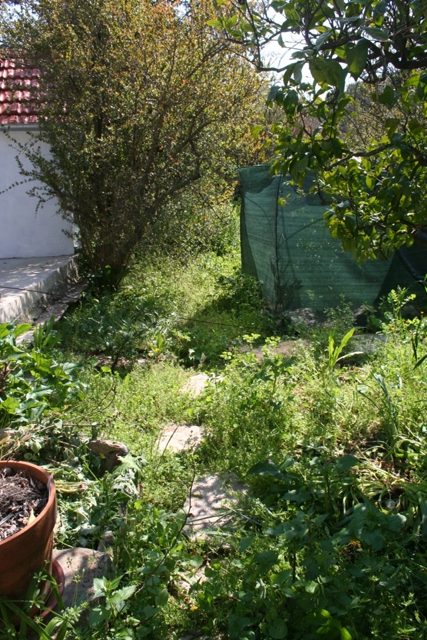
Usually I have taken the material down by early April, but here we are a month later, and the weather is only now becoming summer like.
Two things are obvious. First, there is a profusion of blossom on all the trees except the Lime. I was told that Key Limes are difficult to grow, even here in the Mediterranean.
It has survived and is growing, but putting it in a protected corner also means that it is somewhat shaded by nearby larger trees.
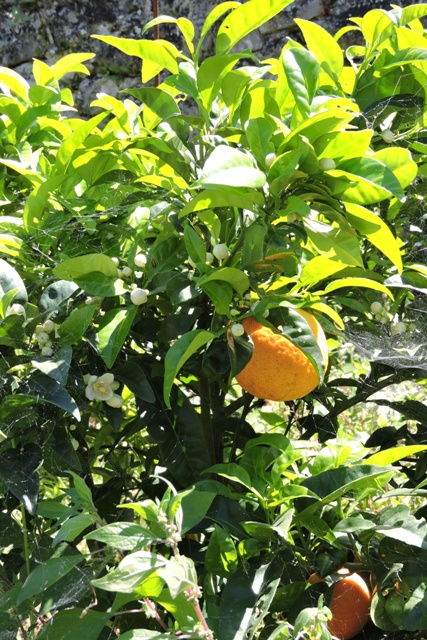
However of the other citrus, even a recently planted Red Grapefruit has its first flowers. So very clearly all the trees seem to have benefited from the additional protection provided by the shade netting.
The second thing that I noticed is that there were just one or two weeds which had grown around the base of the protected trees inside the netting.
I found that there were just a very few small weedlings to be pulled out by hand from under the trees.
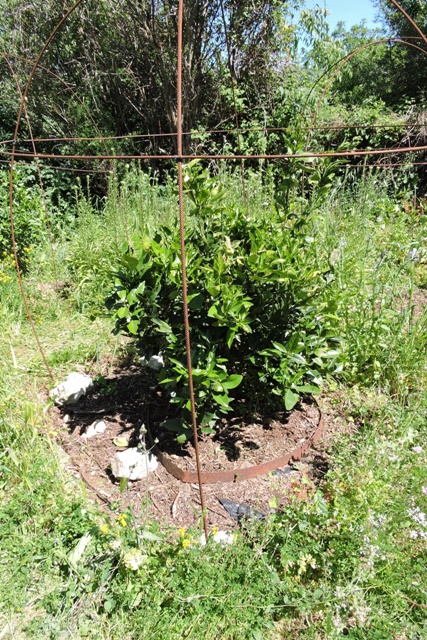
I have protected the base of each tree with a thick mulch, but that does allow weed seeds that blow in to germinate. However the weedlings are easy to remove. But just leaving the shade up for a month longer seems to have also prevented a lot of germination.
I am trialling a “no dig” regime in the orchards this year, so instead of hoeing to keep the weeds at bay, I have just let them grow.
Just the deep rooted pernicious weeds like thistles have been dug out by hand.
So it seems that once again, just by chance, I have discovered a hack. Just by leaving the material up for longer has provided benefit to the trees and to the ground underneath.
I will remember it for next year and not be in a rush to remove the netting as soon as the days lengthen and warm in the spring.
Rewalling
Having finished my work in the Konoba means that I have a few days breather before the workmen come back for the next part of the project.
I noticed at the end of last summer that the low dry stone wall I had built around my equipment sheds, wood cutting area and compost bins in the Top Orchard was collapsing.
Over the winter it has collapsed some more, so I decided to repair one part this week.
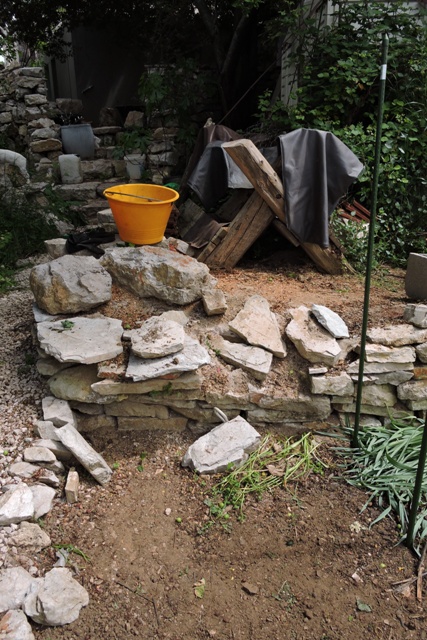
I built the wall three years ago and filled in behind with stones and sand.
But what has happened is that as I have used the area going back and forth to the compost bins, in and out of the storage sheds and for cutting logs, the stones have splayed.

The sand and stones have not bound together.
However what has happened is the amount of footfall has meant that the flat dry wall stones have been pushed out of alignment and on the corner the stones have actually fallen away.
After removing the stones, the material behind is absolutely bone dry. This is why it has not bonded. But it made clearing the sand and stones quite easy.

I relaid the walling and also incorporated a corner seat.
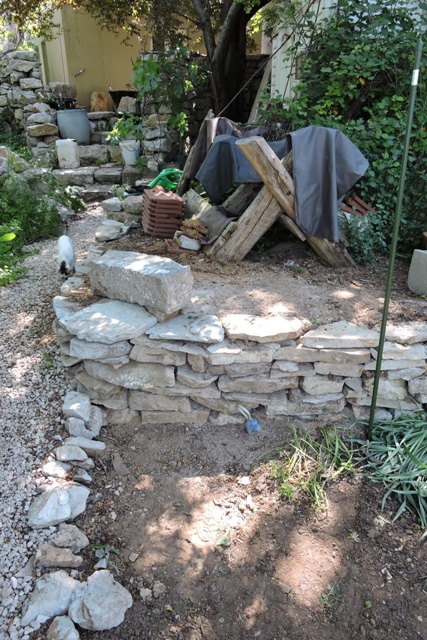
Over time I have found myself sitting here, because it has a view down the orchard, and also because I had put a large, flat stone on the corner.
The large stone I had put on the corner was just the right shape for the position.
I had envisioned using it as a stepping stone between the path and the higher plaza.
In fact I’ve used it as a seat for coffee. So in rebuilding the wall, I have now included a nice curved backrest on the corner too.
At the end of the day, I’m just a creature of comfort, like the felines! NCG
Looking back – Week 18
This is the start of a weekly section, with links to past issues of the blog for this week of the year.
2015/18 Let sleeping cats lie
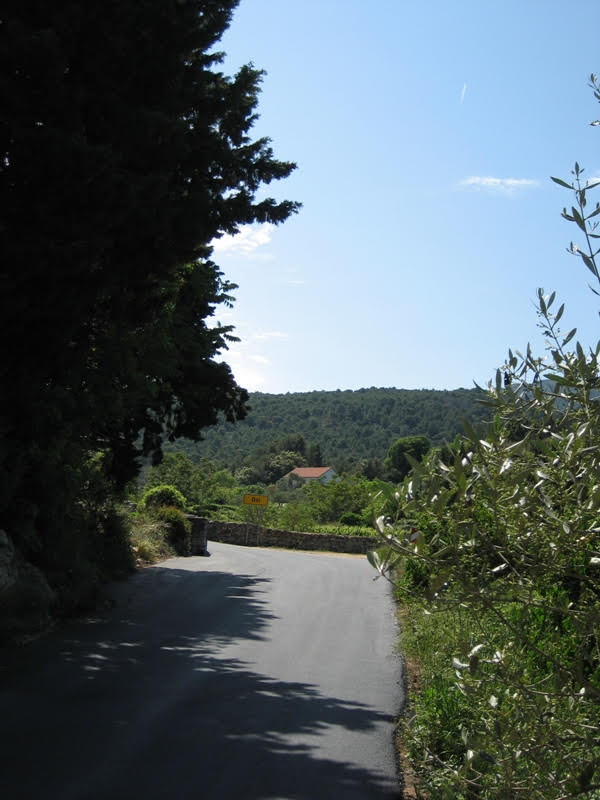
2016/18 The 100th edition

2017/18 The results are almost in…
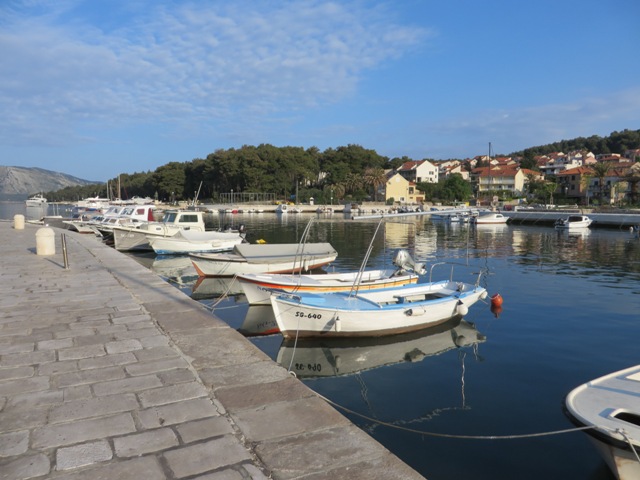
2018/18 Roll out the barrel…
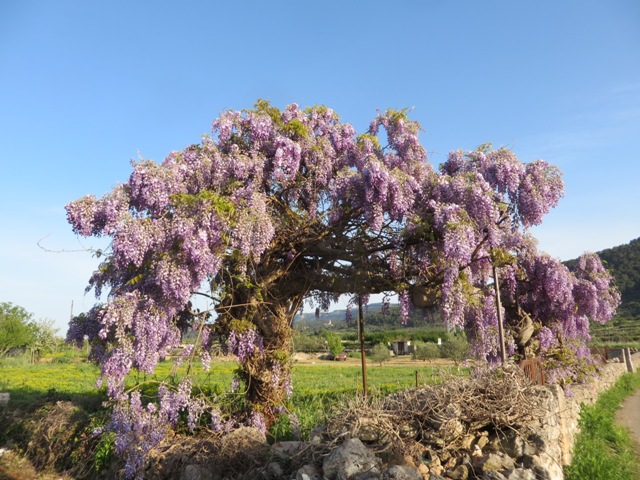
2019/18 Snake in the grass
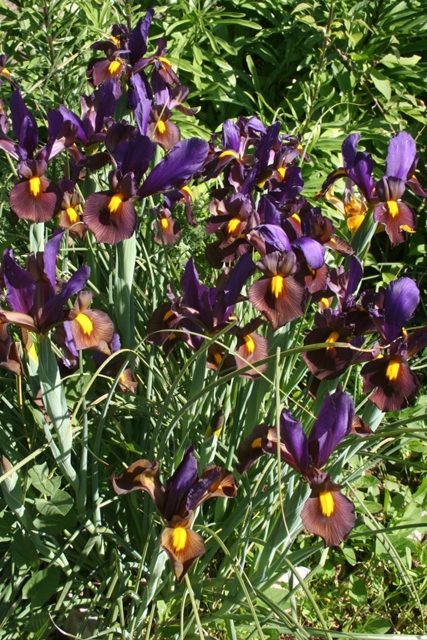
2020/18 Pst! Don’t tell the Architect…
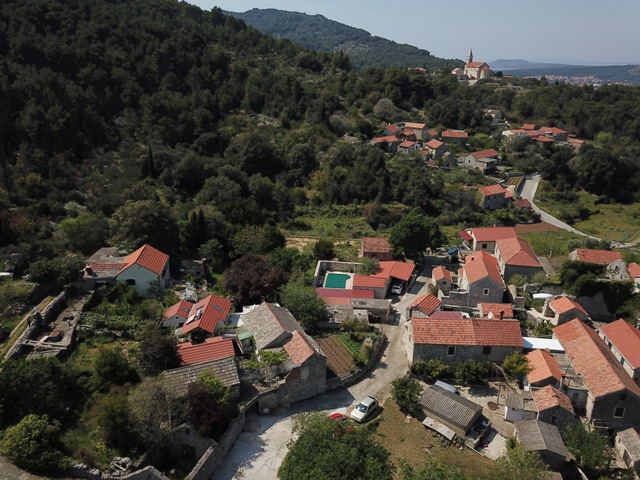
One Response
Tony Griggs
Interesting you mention about the cost of replacing the fluid for the solar hot water service and also batteries. Non of this is ever factored in to “clean energy” Norman, let alone the cost. I’m all for clean energy but the reality is all forms of energy carry carbon footprints, as well pollutant materials to manufacture/fabricate. “Clean” energy isn’t really clean, it’s just that some forms of energy carry less carbon/pollutants/cost than others!